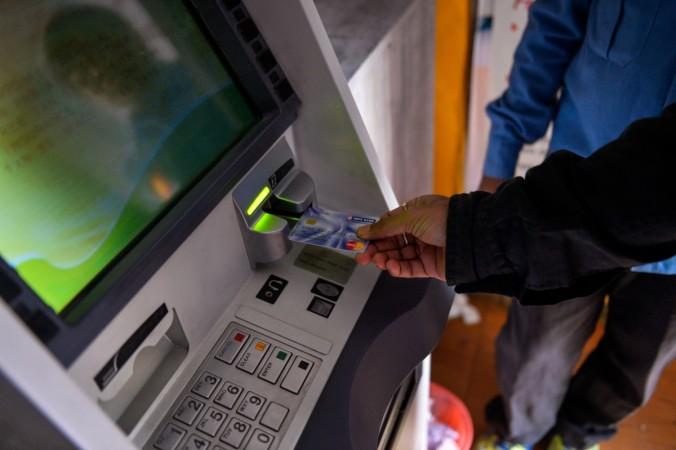
Andhra Pradesh, Telangana and Karnataka have been witnessing an acute cash shortage in banks and ATMs. In many places in Telangana and Andhra people turned up in large numbers to close their fixed deposits as well. While some observers say it's a bank run in the making, others brush aside such fears.
Whether Indian banks are so fragile already and are waiting for the proverbial last straw on their back is a different question. Technically, a run on bank can gain kinetic momentum. When that happens, the government underwriting may not eventually save them.
The faith in the banking system is at an all-time low. Three factors are cited as the reasons for this -- the ballooning NPAs, the Financial Resolution and Deposit Insurance (FRDI) Bill and the rising incidences of bank fraud.
If panicked depositors are scurrying for cover, they can't be blamed. Let's stitch together the spooky bank story in a chronological and causative way in order to understand it better.
Non-performing assets
The amount of non-performing assets or bad loans in India is currently about nine lakh crore, 90 percent of which is in the government-owned banks. This is projected to swell further. These are loans that are unlikely to be repaid either because the debtors have gone belly up or are wilful defaulters.
Write-offs
Banks write off the NPA to clear their balance sheets if they think there is little chance of these getting repaid. In India in the last four years, nearly Rs 3 lakh crore have been written off. This means the banks take a 100 percent provisioning in the absence of any chance of the loans turning productive again. Banks have the last resort of selling the confiscated assets of the defaulters to recoup the lost money.
Statistics for the last four years has shown that only about 10 percent of the Rs 3 lakh crore was recouped by the banks. In plainspeak, swindlers and failed businesses have robbed Indian banks of more than 2.5 lakh crore in the last four years alone. And more loans that have turned sour are waiting to take this route.
Bank frauds
There has been a steady, crippling string of bank frauds in recent years. Vijay Mallya siphoned Rs 6,000 crore from banks to shell companies, Nirav Modi and Mehul Choksi duped Punjab National Banks to the tune of Rs 14,000 crore, an ex-director of Andhra Bank was arrested in a Rs 5,000-crore bank fraud and the Serious Fraud Office (SFO) found top officials at SBI Capital Markets and Ambit guilty of fraud. Most lately, the CBI slapped charges on a Gujarati firm in a case of fraud involving Rs 2,654 crore.
The private sector has been less tainted in comparison with the public sector banks, but of late that has changed too, with the head honchos at ICICI and Axis Bank coming under the lens for shady loan deals.
Fear factor
A bad loan running into several hundred crores is seldom an accident. It's the product of bad judgment, lack of accountability and corruption. The bad loans that go into bogus businesses, the cronies and the insiders are ultimately the good money of the depositors and savers. After a laughable cycle of NPAs-writeoffs-recovery, pretty little of the funds come back to the banks.
Bank recapitalisation
When these losses accumulate the banks need the lifeline. And the government can ill afford to let a bank run or a bank failure happen. And so recapitalisation becomes the only option. The government announced a public sector recapitalisation program that set aside Rs 2.11 lakh crore last year. And that's tax payers' money, again. However, no government can endlessly recapitalise a failing bank. Government sources have indicated this as well.
FRDI bill and the bail-in clause
If banks are vulnerable because of chronic mismanagement, is the money safe there? How far will the government go to protect the depositor's wealth in the event of a bank failure? Will the deposit insurance be enough to protect the savings? These fears worsened when the Financial Resolution and Deposit Insurance (FRDI) bill was proposed last year.
The 'bail-in' clause in the draft legislation provides for the modification of the nature of the deposits in the event of a bank failure. To put it bluntly, if a large bank with bulging deposits fails it can decide to turn a part of the deposits on its book into equity. And that can happen without seeking the consent of the depositors. Seeing your cash deposits abruptly turning into equity shares of a failing or already failed company isn't a pretty sight after all.
This is how NPAs, write-offs, bank recapitalisation and the bail-in clause are all connected. This is why depositors are fast losing trust in the system. And this explains why people are withdrawing their deposits and running the ATMs dry. Studied optimists believe the government will never allow a bank to resort to the bail-in clause, that 100 percent of the deposits will be protected and that bank frauds and NPAs will progressively decline.
However, we often forget that stampedes are not created by those who live by hope but by the poor, spooked souls rushing to the exits.








